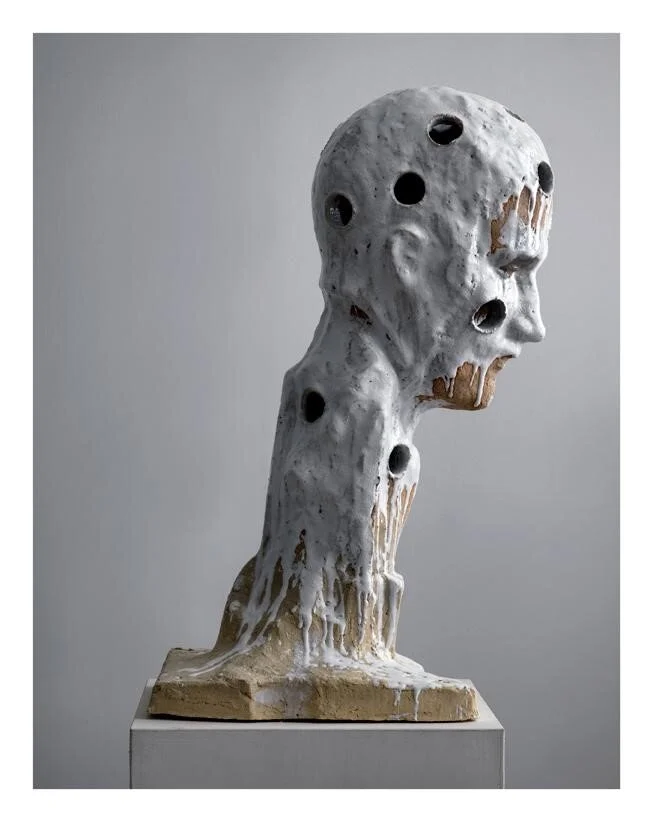Manresa
Joost Demuynck
Manresa[1]
Imagine the real,
It’s the imaginary contained in the real
It’s the fabric, the body [2]
In his Course, Being and the One, Jacques-Alain Miller points to the necessary hypothesis of the impact of a primordial signifier on the body: "We can say that here language [le langage] is to be grasped at the level of what is imprinted [imprints itself] on the body, with an effect of jouissance: the One is imprinted on the body."[3]This signifier is an arbitrary signifier and constitutes a trauma. Whereby one wonders if it is not at the heart of all other traumas, since each of them contains a nucleus of [a] real. For Johan Tahon it was the death of his father, a trauma that led him to create monumental plaster sculptures.[4] Is it an escabeau or a sinthome, one wonders. Is it to create beauty as the last defence against the real?
For Tahon, the birth of a work stems from a physical relationship to the material, which imposes itself on him. Creating allows him to function, so he works on a daily basis, not to respond to a coincidence, but from a necessity. He does not start from pre-existing stories. Concerning Manresa and other similar perforated sculptures, he says he enjoys making these holes[5]. This is enough. These are holes that pierce the white skin of the ceramic and the underlying flesh (the fired clay). Making holes. An impact of something he cannot name.
We try to get a grip on these bits of the real via language, the symbolic. At the end of his teaching, Lacan believes that poetry can save us, but he also comes back to this : "Even a poâte is commonly called a simpleton - one does not see why he would be an exception"[6]. He [Lacan] thinks that a new signifier is possible which, like the real, has no meaning, but it still opens up the way. This new signifier can also be an image.[7] The artist tries to imagine this real, something that he never succeeds in but which can be the driving force of a continued work.
Translated by Raphael Montague
References
[1] Manresa is a head pierced with holes. Ceramic work by Johan Tahon. Cover of the book Refuge/ Silence, for an exhibition at the Musée Ariana, Geneva, Switzerland, 2019.
[2] Miller, J.-A., Le tout dernier Lacan, Teaching delivered under the aegis of the Department of Psychoanalysis University Paris VIII, Course of the 06.06.2007. Unpublished.
[3] Miller, J.-A., Being and the One, Teaching delivered under the aegis of the Department of Psychoanalysis, University Paris VIII, Course of the 23rd of March 2011, Unpublished.
[4] Fourneaux M.-E., Johan Tahon, le feu mystique, Refuge/Silence Catalogue, op. cit, p.20.
[5] Personal correspondence - 31st of October 2020.
[6] Lacan J., L’insu que sait… Seminar XXIV, Lesson of the 17th of May 1977, in Ornicar ? 14, Unpublished in English.
[7] Miller, J.-A., Le Tout Dernier Lacan, Teaching delivered under the aegis of the Department of Psychoanalysis University Paris VIII, Courses of the 23rd and 30th of May 2007. Unpublished.

